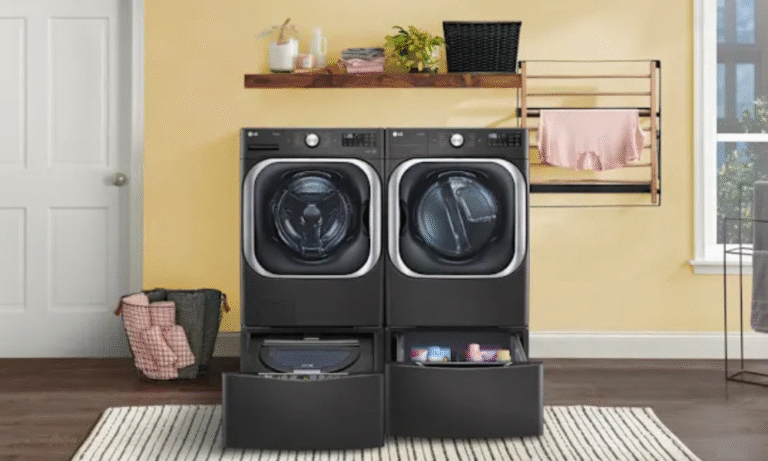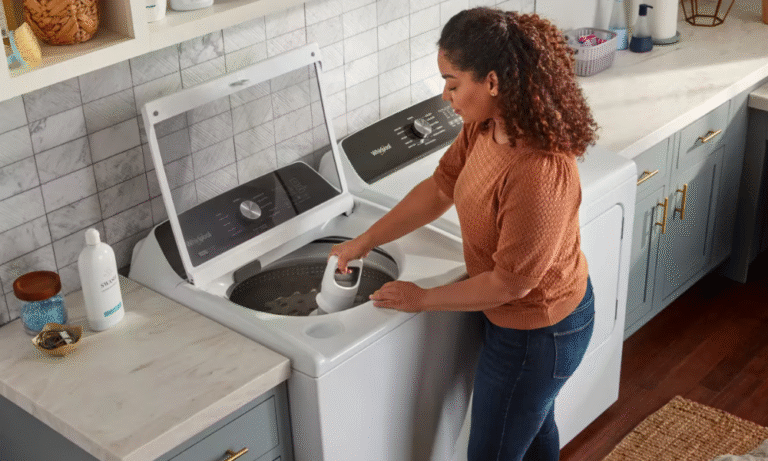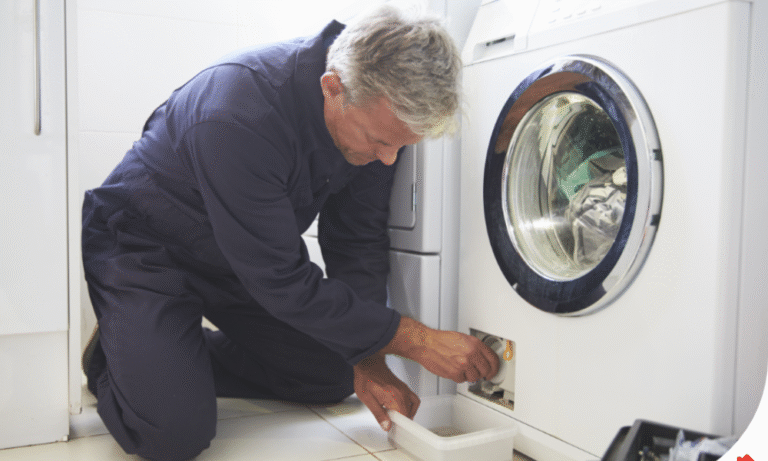Estimated reading time: 5 minutes
Last updated on August 16th, 2025 at 03:22 am
Before buying a washing machine, many people are concerned about how much a washing machine weighs. The washing machine is an integral part of your home when you have More or less 300-pound clothing items to wash. Weigh of washers are being relevant at commonly two times firstly when you are thinking about buying a new one or switching to a newer model and you are shifting or moving on pace to another.
If you have an idea about your washer weight it will help you to assume what will you go face before moving it. Generally speaking, a washing machine’s weight depends on several factors such as machine size, types of machines, manufacturers, and machine capacity.
From 1851 the washing drums to new washing machines go through a weight change with various things to add or detach to make it more and more convenient to the customers. A standard or mid-size top-loading machine with modern features is approximately 150 pounds while a standard front-loading machine is between 200 -250 which is much heavier than top-loading washing machines.
How do you know, how much a washing machine weighs?
Reason for washing machine weight:

Using concrete block which added more than 35 kg at a standard size machine as 70 kg with washing tub and other parts to being heavy. But without these, your machine will fluctuate on the floor when it will go in the process of wash and rinsing.
Another part such as a motor, pump, tub, and structured construction adds more weight. Per capacity to load things, tub size is built. They are from stainless steel or aluminum and the motor has 30 to 20 pounds weights per model and size.
And finally, the governing body of washing machines is also a reason to make a washer heavier. With these environmentally unfriendly concrete blocks, we reasoned for extra fuel costs and extra carbon emissions.

Weight of Top loading and front loading washing machines:
According to the mentioned formation, top-loading washers are lighter than front-loading machines. The water consumption of the top-loading machine is so high that the front-loading machine has technological addition to clean as same as the top loader with less water.
Front-loading washer has the lowest capacity 70 pounds for 2 cubic feet, and 135 pounds for 3.0 to 4.0 cubic feet. If you made research on the network among the front and top-loading machines you will find that front-loading machine’s differences in weight are 70-75 pounds with big capacity for both counterparts. So, requires more weight for balanced movement.
Because of cutting 50 percent electricity less than a top-loading machine and 5 to 7 gallons less water consumption per wash cycle it is built with high-efficiency quality and to ensure these points it has a huge weight and higher price.
Water weight in the washer:
To clear this topic we should compare the models of older and newer washing machines. We count water weight with gallon pounds. The old washer of the 19th consumer of 40 gallons for the wash cycle to wash and rinse, whereas the stander new one consumes 25 to 28 gallons, and HE features used only 17 gallons to wash properly. Through this, you can get an idea about water weight in the washer of various.
Washer weight with dryer:
The combos of washer and dryer are getting essential as it completes two works in one stand. When you are living in small apartments these separate appliances have more space but with arrival, combos get two advantages in washers.
But along with benefits, it’s made an overload for dryers. It is 25 percent more weight than your washing machine to finish the dry work.
Differences between heavier and lighter weight-watching machines:
As per the previous discussion, we know that the heaviness of washing machines helps to provide balance in the working process of wash and rinsing. But they are not eco-friendly overall.
So, lighter washing machines can be helpful for carbon emission and saving cost fuel. Undoubtedly they are easy to move. Few of the models are available in the market with a lightweight quality.

Weights problem solution of washing machine:
If you are moving with your washing machine weight may be a reason for a headache then follow these 7 steps that will be a bit easier.
- Ensure that the washer has nothing like water or clothes.
- Unplug the appliances and detach the drain hoses correctly.
- Close the removal patent of washers accurately.
- Protect the machine with bubble wrap from damage.
- Tie all the pipes and connection kits in safely as they will get found easily when they are needed.
- Manage a specialized moving dolly or other transport for heavier things.
- Be careful to up and down moving as it became heavier for gravitational force.
Having experience of uplifting or dragging the washing machine is quite troublesome which reminds you of the back pain or strains on the floor as washers come with an average of 70 kg weight.
Final Thought
In conclusion, a washing machine weighs around 300 to 500 pounds. Some might be more heavily depending on the make and model, but the average weight is around that range. So if you are thinking about buying a new one, be sure to factor in the weight before making your decision. As always, use caution when moving an appliance and call a professional if needed.



